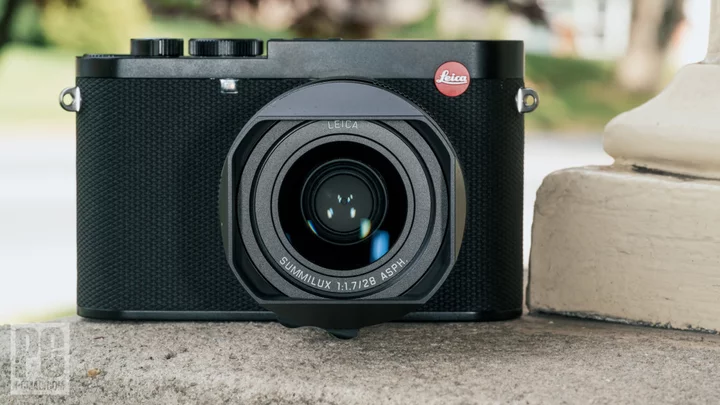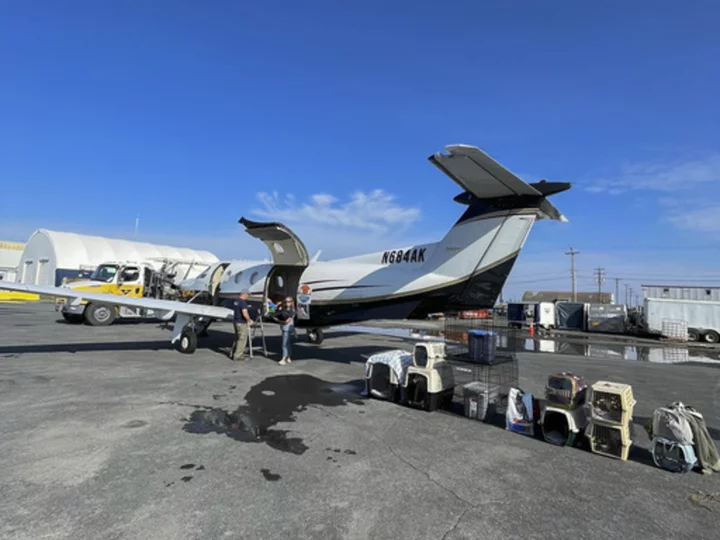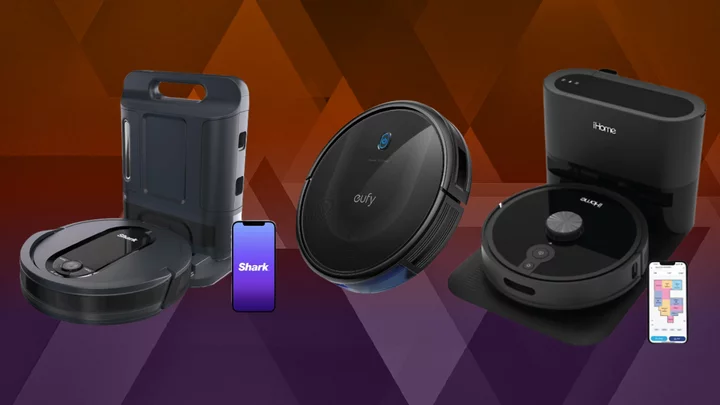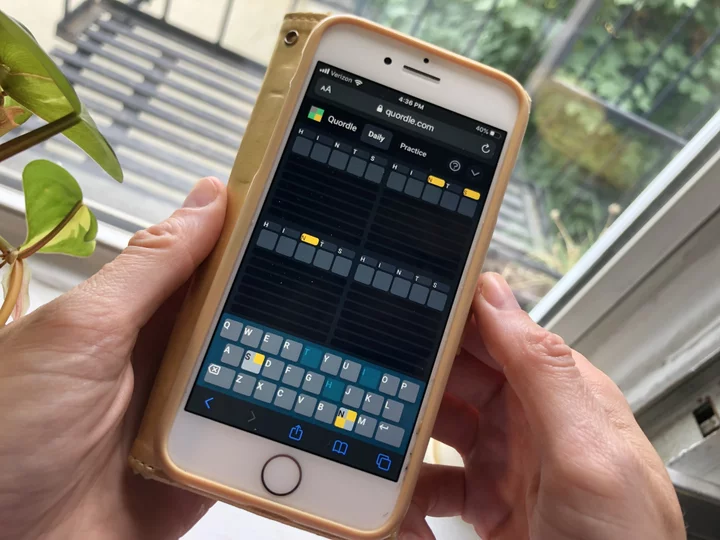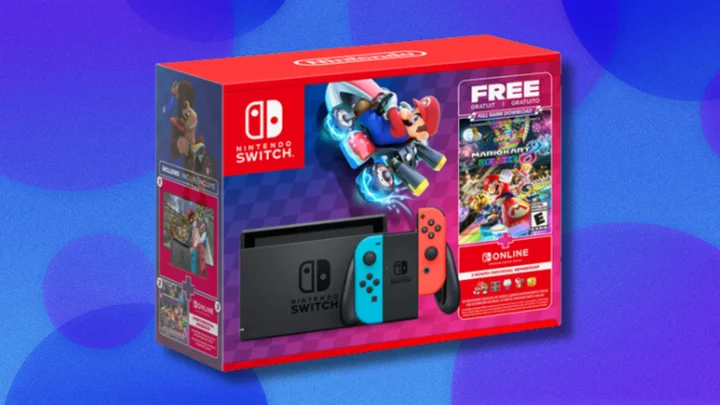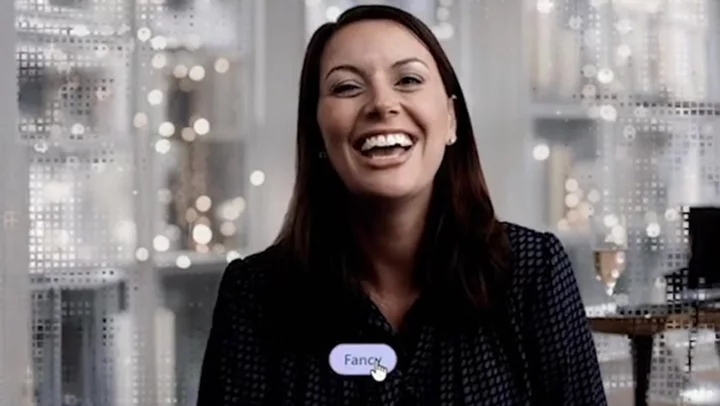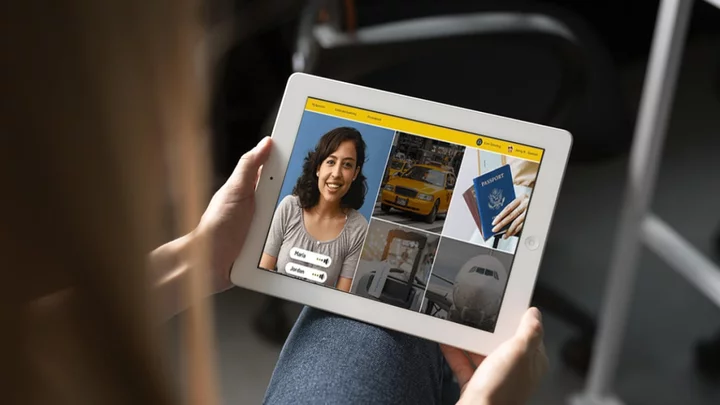For its third-edition luxury Q series travel camera, Leica doesn't stray too far from an already-winning formula. The Q3 ($5,995) uses the same fixed 28mm Summilux lens as past models, but ups the full-frame sensor resolution to 60MP and switches to a sharper, tilting rear display. Leica leaves off the internal storage allotment it has included with recent releases, but the Q3's upgrades still make it a worthy successor to the Q2. Fans of fixed-lens cameras get a gem here, even if Leica's luxury pricing puts it out of reach for most.
Fixed Lens, Full-Frame Sensor
Although Leica's rangefinder cameras, like the current-generation M11, are its most popular, fixed-lens cameras have been in the company's catalog since the film days. That line has continued in the digital era under the Digilux, X, and now Q banners. To date, all Q cameras have used the same 28mm F1.7 Summilux lens and a full-frame sensor. In-camera crops are available if you prefer a tighter angle, and now, the 60MP sensor behind the lens offers more room to crop than the Q2 (47MP) or Q (24MP).
The wide-angle lens is a good match for travel, and at 3.2 by 5.1 by 3.6 inches (HWD) and a reasonable 1.6 pounds, the Q3 isn't much to carry. A similar full-frame swappable lens kit, the Sony a7C (2.8 by 4.9 by 2.4 inches) with the FE 24mm F1.4 GM, weighs about 2.1 pounds for comparison.
Weather protection is included as well, another boon for travel. The Q3 sports an IP52 rating, which means you can use it in dusty and rainy conditions without turning your new Leica into a multi-thousand-dollar paperweight.
You can expect the camera to last, too. The body incorporates magnesium and aluminum materials for a light-but-sturdy build. The Q3 is available exclusively in black, though I wouldn't be surprised to see limited edition finishes launch during its lifespan. At press time, you can get the previous-generation Q2 in a white Ghost finish by Hodinkee, an olive green Reporter edition, and a special iridescent Dawn edition designed by Seal.
As for alternatives, there are fewer now than when I reviewed the Q2 Monochrom in late 2020. Aside from Leica's line, the Sony RX1R II represents the only remaining full-frame compact on the market; it debuted way back in 2016, and some aspects are outdated today, especially its battery life.
Like-minded alternatives with smaller sensors exist, too. The crop-sensor Fujifilm X100V is the most similar in concept to a Leica thanks to its rangefinder-style viewfinder and 35mm F2 lens, but it has been on constant backorder. The Ricoh GR III and IIIx also use APS-C sensors but don't include viewfinders. The Canon G1 X Mark III is a little larger but uses a zoom lens. Cameras like the Panasonic LX100 II (which also went by the Leica D-Lux 7 name) and Sigma dp Quattro series are all out of production.
Leica Q3 Handling and Controls
The Q3 maintains the same design as its predecessors except for a new tilting rear display, and it's comfortable for handheld use. The textured leatherette is large enough to facilitate a good grip, and the indented rear thumb rest is in an optimal position.
If you prefer, you can purchase an add-on grip for $195. The HG-DC1 Wireless Charging Handgrip adds a front grip to the camera and supports Qi inductive charging. You would just need to pick up a 10W charging pad if you don't already have one.
Leica also markets a leather half-case and matching strap for the Q3 as an alternative to the grip. Round, vented metal hoods are available to replace the included rectangular hood as well, if you want something that looks a bit more vintage. Finally, you can add a soft release to the threaded shutter release button; Leica markets some, but generics work too. I had no problems with a Match Technical Boop release in testing.
Fully automatic, semi-automatic, and manual exposure options are available. As you might expect from Leica, the control scheme matches old-school film cameras. You set the aperture on the lens, and there's a shutter speed dial on the top plate. A nearby flexible control dial is swappable between ISO and EV adjustment, putting the exposure triangle at your fingertips.
The on-lens aperture control goes from f/1.7 down to f/16 with third-stop clicks and has an A position for automatic control. A finger-hold tab on the barrel lets you set the focus manually and has a small push button lock to move between manual and autofocus operation. The manual focus response is as close to a mechanical zoom as you can find in an electronic focus-by-wire system, thanks to ample dampening and no perceptible lag. It's also easy to magnify the frame, a handy focus assist. One minor complaint is that the button to switch the focus mode is a little too small to find by touch.
A second control ring at the base of the lens swaps between the standard and close-up macro focus ranges. In macro mode, the Q3 focuses as close as 6.7 inches for 1:4.1 magnification but narrows the maximum aperture to f/2.8. It's easy to get soft backgrounds even at those higher apertures though. For comparison, the RX1R II hones in to 7.9 inches with a slightly tighter lens for similar macro results, while the Fuji X100V focuses to 3.9 inches for similar magnification (1:4) macros.
On the rear, there are two unmarked function buttons, Play and Menu buttons, and a four-way directional control pad with a center button. The function buttons are configurable, with pages and pages of options available. An on-display touch interface provides quick access to metering, continuous drive, and other common settings, though its function set is not adjustable.
The rear screen is an upgrade over the one on the Q2. The Q3's 3-inch panel is sharper (1.84 million dots vs. 1.04 million dots) and enjoys the upward and downward tilt action absent from earlier editions. It's a wonderful feature for a travel camera and makes it easy to get photos of low-to-the-ground subjects. The screen is plenty bright for outdoor use, too; I had no problems using it on a bright spring day at a local botanical garden.
The Q3 also includes a better eye-level electronic viewfinder than previous models. This EVF ups the panel resolution from 3.7 million dots to 5.8 million dots for a clearer view of the world. The finder refreshes at 120fps, and its 0.76x magnification rating is as large to the eye as you get with premium swappable lens cameras. It's a better EVF than you get with the Sony RX1R II (2.4 million dots, 0.74x), though not quite as technically ambitious as the hybrid optical/electronic finder in the Fuji X100V. Fuji out-rangefinders Leica by cleverly swapping between an optical view with coverage that extends beyond the scope of the lens, a feature that photojournalists and documentary filmmakers should appreciate.
The Q3's EVF shows only what the sensor sees, though Leica does throw a bone to fans of rangefinder framing. The Q3 supports in-camera digital crops at 35mm, 50mm, 75mm, and 90mm, and instead of narrowing the angle of view in the EVF, it draws a set of frame lines to indicate the cropped-in view. The camera saves the restricted view of photos you snap with the in-camera crop enabled as JPGs. Raw DNG files show the cropped view by default in workflow applications, but make sure to save the entire full-frame image so you can go back to a wider view in the editing room.
Leica Q3 Power and Connectivity
The Q3 ups the capacity of its battery to 2,200mAh, but its BP-SCL6 cell retains the same design as those for the Q2 and mirrorless SL2, the BP-SCL4. If you already have some BP-SCL4 batteries, you can still use them to power the Q3, but with fewer exposures per charge and no support for power-hungry 8K video recording.
With the new battery, the Q3 gets about as many exposures per charge as its predecessor (around 350 per CIPA testing standards). You can get more photos per charge if you use high-speed bursts, but that's more of a use case for telephoto disciplines than wide-angle travel. I had a short time to evaluate the camera, but in two outings I knocked the battery down by about a third after taking around 100 photos and a few video clips, which is pretty close to the estimate.
Even so, a few hundred snaps is limiting for all-day use. If you're using the Q3 for photo days where you're out and about without ready access to power, spend an extra $170 on a spare battery. A power bank can also work in a pinch because the Q3 supports USB-C charging. Leica includes an external wall charger too, so you have plenty of options for replenishing the battery even if you skip the pricey Qi charging handgrip accessory.
f/5.6, 1/50-second, ISO 160The Q3 has no internal storage, so you need to rely on the single UHS-II SDXC slot. It's easy to unlatch the access door on the bottom and pull the card out to offload media. Alternatively, you can use the USB-C port to transfer photos to a computer or iOS device. The Q3 is a certified Made for iPhone accessory and includes a USB-C-to-Lightning cable for wired transfers to your handset.
The camera works with the Leica Fotos app (available for Android and iOS) for file transfers. Wireless transfers are an option if you don't want to go the cable route, and the Q3's Wi-Fi supports MIMO for transfer speeds of around 35Mbps (the Q2 topped out at 3Mbps). Because of the speed increase, the Q3 supports wireless transfers for video, as well as JPG and DNG stills.
f/2.8, 1/1,600-second, ISO 100I didn't test Fotos with the Q3, though I recently looked at the app alongside the M11 Monochrom. Fotos doesn't include its built-in editing tools but makes it easy to send DNGs to Lightroom Mobile (if you subscribe to Creative Cloud) or your phone's default editing app. It also enables remote camera controls.
Fotos is getting a new feature for the Q3 called Leica Styles, a set of film-look JPG profiles. Styles weren't ready for testing, but Leica says Blue, Classic, Contemporary, Selenium, and Sepia looks will kick things off, with more options arriving later. You can load any of them into the Q3 via the Fotos app. Photogs who wear "I Shoot Raw" T-shirts may scoff at snapping JPGs with a Leica, but I don't see anything wrong with leaning on profiles to improve the look of your photos.
Autofocus Enjoys Phase Detect Upgrade
The Q3 replaces the Q2's relatively basic contrast detection system with a new one that mixes Depth From Defocus (DFD) contrast and phase detection, as well as brings support for face and pet detection. The focus system has three operation modes (iAF, AF-S, AF-C) and a variety of coverage areas ranging from as small as a flexible pinpoint to as large as the entire sensor.
f/1.7, 1/1,250-second, ISO 100The autofocus system doesn't have the AI-assisted subject recognition from recent high-end mirrorless cams like the Sony a7R V, but it's not exactly necessary for wide-angle work. Here, the focus system nails the eyes in portraits and is snappy to respond in general. I worked with the camera's 1-field focus area and found it simple enough to tap the rear display to set the area of interest and move around the focus box with the rear d-pad.
The iAF system works pretty well, too. In this mode, the Q3 swaps between single (AF-S) and continuous (AF-C) focus on the fly. In practice, it did a good job keeping focus locked down when I photographed still-life scenes and seamlessly swapped to continuous focus when I moved the camera toward and away from macro subjects.
f/5.6, 1/50-second, ISO 125High-speed capture is an option as well. The Q3 supports 14-bit Raw at up to 9fps with its in-lens leaf shutter, along with sync at 1/2,000-second with external flashes. Its fully electronic shutter can go as fast as 15fps at 12-bit quality but isn't a great match for subjects in motion because rolling shutter distortion is noticeable, and readout isn't fast enough to sync with flashes.
60MP Isn't Overkill
The full-frame 60MP BSI CMOS sensor inside the Q3 is the same one from the Leica M11. Here, it pairs with a fresher image processor, the Maestro IV, which supports an expanded ISO range of 50-100000 and ups the buffer memory to 8GB to better support the Q3's snappy continuous drive. The extra pixels also accommodate the Q3's in-camera digital crop (now up to 90mm).
As I mentioned above, the digital crop adds some versatility, but because it's an in-camera crop (as opposed to true optical zoom), there's no change in compression or depth of field. For reference, the Q3 delivers up to 39MP files at 35mm, 19MP at 50mm, 8MP at 75mm, and 6MP at 90mm.
f/1.7, 1/50-second, ISO 1250Photographers who prefer smaller files have options as well. The Q3 supports a pixel-binned triple resolution feature, so you can set it to record at 36MP or 18MP if you prefer, without any loss in picture quality; 14-bit DNG and 8-bit JPG are available at all megapixel settings. So although you might find 60MP to be too much for day-to-day photography, it's simple enough to select a lower resolution and keep file sizes down.
Raw images in Lightroom Classic with default settings show clean detail with very little noise from ISO 50 up through ISO 1600. Luminance noise ticks up from ISO 3200-6400 and is rough enough to detract from picture quality at ISO 12500-25000. The rough texture increases at ISO 25000-100000, but all are usable if you don't mind a grainy picture. Color fidelity is strong up through the top ISO, and I don't see any sign of splotchy color noise in pictures.
f/1.7, 1/50-second, ISO 5000The Raw files offer ample room to adjust color and exposure and can handle scenes with vastly different light levels without worry. Noise increased when I pushed the shadows, but no more than simply choosing a higher ISO for a scene in-camera.
Out-of-camera JPGs show a little less detail ISO-for-ISO but maintain a decent amount of texture. Leica's default noise reduction is less aggressive than many others, but a little color noise creeps in at ISO 50000-100000. Aside from that, the default Standard profile is a little flat, but a Vivid option gives you punchier colors. The aforementioned Leica Styles promise to deliver more options for photogs who want ready-to-share pictures right out of the camera.
Is 28mm the Only Lens You Need?
This third-generation Q sticks with the original lens, a 28mm F1.7 Summilux that continues to impress with its rendering. It mixes a wide angle and bright aperture to realize defocused backgrounds when you want them.
f/1.7, 1/5,000-second, ISO 100Photogs who typically use swappable lens cameras might find a fixed lens limiting, but the 28mm angle is fairly versatile. It's a good fit for landscapes, cityscapes, and environmental portraiture, while its close-up focus adds some flexibility for macro work. As a general-use focal length, the only knock against it is the lack of ultra-wide coverage for imposing architectural subjects. The high-pixel sensor adds some room to crop, as mentioned.
I used the Q3 to photograph an SFRPlus test target and ran the results through Imatest software to check the resolution of its lens. I saw similar results from the 60MP chip compared with the 47MP imager from the Q2 generation. Wide open, the lens shows very good resolution (3,800 lines) through much of the frame, with off-center results that are on the soft side. If you stop down from f/4-11, the camera nets sharp photos from center to edge. The test numbers are a bit higher here than with the Q2, but that's simply because of the larger pixel count.
f/2.8, 1/800-second, ISO 100From a character standpoint, there's no change from the Q2 or Q. The Summilux snaps photos free from distracting barrel distortion and with very little false color. I spot some purple and green longitudinal chromatic aberration (LoCa) at f/1.7 and f/2.0, but only after pixel peeping. LoCa is gone by f/2.8, so it doesn't detract from backgrounds in macro photos. I did not observe any purple fringing (or lateral chromatic aberration) around in-focus, high-contrast areas of photos either.
The bokeh you get from a full-frame sensor and bright lens, even one with a relatively short focal length, is a strong point. The Summilux defocuses backgrounds with aplomb at brighter f-stops and moderate working distances. Defocused highlights show soft edges, are pleasingly round, and are free of the undesirable onion skin effect.
f/8, 1/50-second, ISO 4000Landscape photogs can coax sunstars out of the lens at f/11-16, though the lens isn't a standout here as the tines emanating from the central starburst are somewhat mushy. On the plus side, the Q3 handles flare and backlit scenes quite well. At small apertures, there's no sign of ghosts from internal reflections, and contrast holds up well for capturing backlit portraits at wide f-stops.
High-End Video, So-So Sound
f/5.6, 1/200-second, ISO 100The Q3 has a surprisingly robust video toolkit. It supports 10-bit 4:2:0 8K and 4:2:2 4K at up to 60fps using HEVC/H.265 and 600Mbps All-I H.264 encoding, respectively. Internal ProRes 422 is available too but tops out at 1080p. You get standard color profiles here, along with HDR HLG and the flat L-Log profile for color grading.
Unfortunately, other aspects make the Q3 less than desirable as a main camera for video, and an expensive proposition to use for B-roll. The camera omits a microphone input jack, for instance, so you're stuck with the in-camera mic. Its omnidirectional pickup is prone to capturing background noise and simply doesn't have the depth or richness you get from a good lav or on-camera shotgun mic.
f/1.7, 1/5,000-second, ISO 100The lens includes optical stabilization, and while plenty of wobble is evident, handheld clips are free of distracting jitter. Rolling shutter is an issue, so some Jell-O motion effects are present in scenes that involve fast-moving subjects or quick pans.
Those limitations mean video creators should turn to an ILC with a stabilized sensor. If you want to stick with Leica, look at the SL2-S for video, or consider the more affordable Panasonic S5 IIx, which uses L-mount lenses.
The Luxury Travel Camera, Refined
The Q3 follows the same ethos as earlier editions: a carry-anywhere camera with a full-frame sensor and a fixed, bright, and wide-angle lens. It has much of the appeal of an M series rangefinder, just with the bonus of accurate autofocus. Middling battery life aside, the 60MP Q3 is a near-ideal travel companion for photogs who enjoy street, documentary slice-of-life, and even macro photography. IP52 weather protection makes it a good fit for nature and outdoor snaps, while the tilting display and upgraded EVF improve the handling substantially. We're less enthusiastic about its video capabilities due to rolling shutter issues and a mediocre mic, however, and would have gladly traded 8K recording capabilities for some internal storage.
Unfortunately, there are few alternatives worth considering. If you prefer a 35mm focal length, you could look at the Sony RX1R II, though its ergonomics aren't as sound, and its battery life is anemic by today's standards. The Editors' Choice-winning Fuji X100V is the most sensible pick for anyone who wants a Q3 but doesn't have the budget. It's difficult to find in stock, however, with used copies fetching higher-than-retail pricing on the secondary market. Snapping up a secondhand Q2, or Q2 Monochrom, is also an option, though a factory-fresh Q3 offers a more polished experience.

